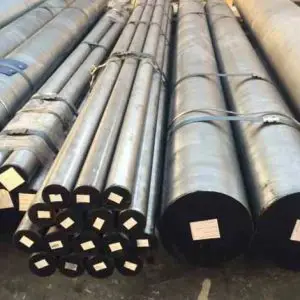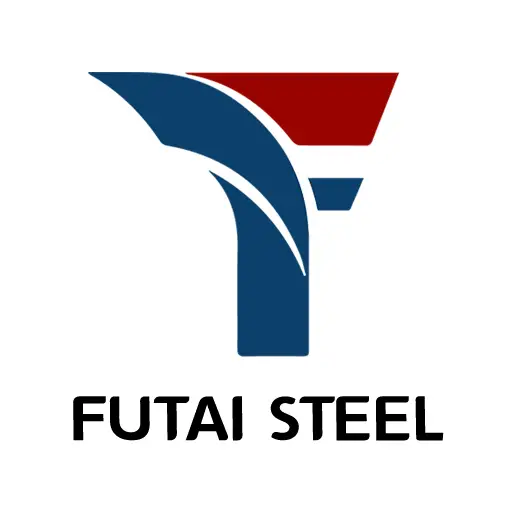Tool Steel Round Bar vs. Regular Steel: 6 Key Differences
Table of Contents
Introduction

Steel is one of the most commonly used materials in a variety of industries. When it comes to choosing the right type of steel for specific projects, understanding the properties of different types of steel is essential. Two popular types are tool steel round bar and regular steel, both of which have unique characteristics suited to different applications. Tool steel round bar is typically favored for high-performance tools, while regular steel is more common in construction and general manufacturing.
But what sets these two apart? In this blog post, we’ll dive deep into the critical differences between tool steel round bar and regular steel, discussing everything from their composition and hardness to their costs and applications. By the end of this post, you’ll have a comprehensive understanding of which type of steel is right for your specific needs.
What is Tool Steel Round Bar?

Tool steel is a high-carbon steel that is alloyed with elements like tungsten, molybdenum, and vanadium. These alloying elements are added to enhance its hardness, wear resistance, and toughness. Tool steel round bar is specifically designed for use in the creation of tools and dies that are subjected to high levels of wear, pressure, and temperature.
Tool steel is engineered for high-performance applications. It is often used to manufacture cutting tools, molds, dies, and dies for metal forming processes. Its versatility, combined with its ability to retain its properties at high temperatures, makes it the go-to choice for industries such as automotive manufacturing, aerospace, and tooling.
What is Regular Steel?
Regular steel, often referred to as carbon steel or mild steel, is made primarily from iron and carbon, with only trace amounts of other elements. Carbon steel is classified into low, medium, and high-carbon steels, depending on the amount of carbon it contains. Regular steel is commonly used for structural applications, including the manufacturing of beams, frames, and pipes.
Unlike tool steel, regular steel does not undergo the same heat treatment processes or alloying steps. As a result, it lacks the high wear resistance and heat resistance properties of tool steel. Nevertheless, regular steel is still a popular choice due to its affordability and versatility in general-purpose applications.
Key Differences Between Tool Steel Round Bar and Regular Steel
NO 1. Hardness and Durability
One of the key differentiators between tool steel round bar and regular steel is their hardness and durability. Tool steel is specifically designed for heavy-duty applications, making it much harder and more durable than regular steel. The alloying elements in tool steel provide it with a higher hardness rating, enabling it to withstand extreme wear and pressure. This makes tool steel round bar ideal for cutting tools, stamping dies, and other tools exposed to high stress and wear.
| Property | Tool Steel Round Bar | Regular Steel |
|---|---|---|
| Hardness | Higher | Moderate to Low |
| Wear Resistance | Superior | Moderate |
| Temperature Resistance | High | Low to Moderate |
| Toughness | Excellent | Good |
In comparison, regular steel is more prone to wear and tear under similar conditions. Although it is strong enough for structural use, it does not hold up well when subjected to constant friction or high temperatures. As a result, tool steel round bar is preferred in industries that demand durability.
NO 2. Corrosion Resistance
Corrosion resistance is another important factor in determining the right type of steel for a particular application. Tool steel round bar is specifically designed to resist rust and other forms of corrosion, even when exposed to harsh chemicals or high humidity. This is due to the added alloying elements in tool steel, such as chromium, which improve its resistance to oxidation.
Regular steel, on the other hand, is more susceptible to rust and corrosion. While some types of carbon steel are treated to improve their corrosion resistance, they are generally not as resistant as tool steel round bar. For projects exposed to moisture or chemicals, tool steel is the better choice.
NO 3. Cost Difference
Cost is a crucial consideration when choosing between tool steel round bar and regular steel. Due to the complex alloying process and heat treatments required to produce tool steel, it is typically more expensive than regular steel. Tool steel round bar requires special processing, which increases its overall cost.
However, the higher initial cost of tool steel can be justified in certain applications, as its superior durability and performance can save money in the long run by reducing the need for frequent replacements and maintenance. Regular steel, on the other hand, is more budget-friendly and is often used in general construction and manufacturing projects where extreme strength and resistance are not as critical.
NO 4. Heat Resistance
One of the defining features of tool steel round bar is its exceptional heat resistance. Tool steel can withstand higher temperatures without losing its strength or hardness, making it ideal for high-temperature applications such as cutting tools, molds, and dies. The high heat resistance of tool steel ensures that it maintains its structural integrity even in extreme conditions, which is why it’s commonly used in industries such as automotive manufacturing and metalworking.
Regular steel, in contrast, is less heat-resistant and tends to lose its strength and toughness when exposed to high temperatures. While regular steel can perform well in standard, room-temperature environments, it is not suitable for applications that require thermal stability.
NO 5. Applications
The applications of tool steel round bar and regular steel differ significantly, due to their varying properties. Tool steel is typically used in the production of precision tools, molds, and dies. Its hardness, wear resistance, and ability to withstand high temperatures make it the ideal choice for applications where performance under stress is crucial.
Regular steel, on the other hand, is used primarily for structural applications. It is found in the construction of buildings, bridges, and roads, as well as in the manufacture of everyday items like furniture, automotive parts, and appliances. Regular steel is ideal for general-purpose use but is not suitable for applications requiring extreme hardness or resistance to wear and heat.
Why Should You Choose Tool Steel Round Bar Over Regular Steel?

When deciding between tool steel round bar and regular steel, it’s essential to consider the specific requirements of your project. If your application involves high stress, wear, or exposure to high temperatures, tool steel round bar is the optimal choice. Its superior hardness, corrosion resistance, and heat resistance make it ideal for use in tools and machinery that are subjected to demanding conditions.
On the other hand, if your project involves structural components or general manufacturing, regular steel may be sufficient and more cost-effective. While it may not have the same high-performance properties as tool steel, regular steel is versatile, affordable, and widely available.
Conclusion
Both tool steel round bar and regular steel have their respective advantages and are suited to different applications. Tool steel round bar is the material of choice for high-performance tools and machinery due to its hardness, wear resistance, and heat resistance. Regular steel is more suitable for general-purpose applications where these extreme properties are not required.
By understanding the differences between these two types of steel, you can make an informed decision about which one is right for your project. Whether you choose tool steel round bar or regular steel, both materials have proven to be essential in the manufacturing and construction industries.
FAQ
What is the main advantage of using tool steel round bar?
The primary advantage of tool steel round bar is its exceptional hardness and wear resistance, which are key to its use in demanding applications such as cutting tools, molds, dies, and machinery parts. These properties make tool steel round bar ideal for environments that involve high pressure, friction, and wear. Additionally, tool steel is known for its ability to maintain its strength and performance under high temperatures, which is critical in applications where heat buildup is unavoidable. This makes tool steel round bar indispensable in industries like automotive manufacturing, aerospace, metalworking, and die-casting.
Furthermore, the alloying elements in tool steel, such as tungsten, molybdenum, and vanadium, significantly improve its durability. These features allow it to perform reliably over long periods, reducing maintenance costs and increasing the lifespan of machinery and tools.
Is tool steel round bar more expensive than regular steel?
Yes, tool steel round bar is typically more expensive than regular steel. This price difference can be attributed to several factors, most notably the manufacturing process and the addition of alloying elements. The production of tool steel round bar involves more complex processes such as heat treatment and alloying with elements like chromium, tungsten, molybdenum, and vanadium. These elements significantly enhance the steel’s properties, such as hardness, wear resistance, and heat tolerance, but they also increase the overall production cost.
While the initial investment in tool steel may be higher, its long-term benefits—such as improved durability, performance under stress, and reduced wear and tear—can make it a more cost-effective choice for industries where these attributes are essential. Regular steel, on the other hand, is made primarily of iron and carbon, with minimal alloying, making it less expensive to produce and generally cheaper in price.
Can tool steel round bar be used for general construction?
While tool steel round bar is not typically used in general construction due to its high cost, it can still be useful for specialized components within construction projects that require superior strength, wear resistance, and durability. For example, tool steel round bar can be used in applications such as heavy-duty construction machinery components, cutting tools for metalworking, or molds for casting concrete.
In contrast, regular steel is more commonly used for structural elements such as beams, girders, rebar, and structural plates. The affordability and versatility of regular steel make it the material of choice for most general construction projects. Tool steel’s high cost makes it more suited to industries or applications where performance and longevity are more critical than price.
How does tool steel round bar perform in high-temperature environments?
Tool steel round bar excels in high-temperature environments, making it an ideal material for applications where elevated temperatures are common. Unlike regular steel, which tends to lose its strength and hardness when exposed to heat, tool steel is specifically designed to retain its properties even under extreme temperatures. This is due to the inclusion of heat-resistant elements like tungsten and molybdenum, which help to stabilize the steel’s molecular structure.
Tool steel round bar can withstand temperatures well above those that would cause regular steel to soften or deform. This ability to maintain its strength under high temperatures is critical for tools and components used in industries like aerospace, automotive, and metalworking, where high temperatures are frequent. For example, cutting tools, molds, and dies that come into contact with molten metal need to perform efficiently at high temperatures, and tool steel round bar is well-suited for these demanding conditions.
What are some common applications of regular steel?
Regular steel is commonly used in the construction of buildings, bridges, and other structural components, as well as in the manufacture of everyday items like automotive parts and appliances.
